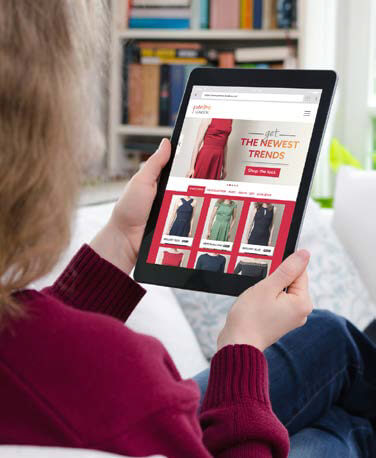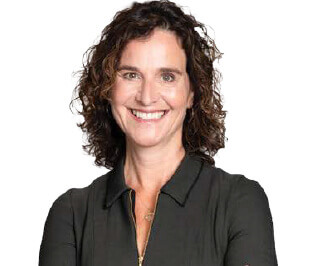Staying ahead
If the first rule of marketing is to offer products and services that consumers want, the second rule is to rip up the first.
It’s not that it’s misguided, of course it isn’t. The principle of building from consumer needs and desires takes us right back to the foundation of modern marketing with the seminal 1960 paper ‘Marketing Myopia’, from the Harvard academic Theodore Levitt.
In those unenlightened times, what the consumer might actually want was an afterthought, as manufacturers sought profits from sales of things they happened to be good at making. Detroit rolled out huge cars because it could and was inclined to – not through evidence a living room on wheels was what consumers were crying out for.
Levitt castigated business for its consumer blindness and argued that the capitalist machine should be thrust into reverse: product should come last, customer needs should come first.
What was revolutionary then is routine now. Ask, learn, offer. What modern brand doesn’t work like that? Which marketer doesn’t spend a big slug of the budget gathering consumers together in airless rooms, observing their articulated whims through the one-way mirror?
That’s the built-in problem with rule one: if everybody’s complying with it, nobody has a natural advantage. The consumer will spill their current version of needs and desires to whoever happens to be listening. Fulfilling them will be standard practice.
A brand can earn a living this way – and many do – but it won’t take it soaring away from the competition and into the stratospheric brand valuation demanded by shareholders and the board. To do that means heading into the space beyond what consumers can ask for today and creating products and services that you know – even if they don’t – will make their lives better tomorrow.
Apple does it with an insouciance that makes it look a great deal easier than it is – inspired by the insistent mantra of the late Steve Jobs: “It’s not the customer’s job to know what they want.”
But Apple is at least pushing on a half-open door. Consumers may not have recognised any need for the iPad between their smartphone and laptop but they were willing to go to see it and touch it because tech is basically nice. More than 360 million units later it seems they have worked out their own reasons for why life can’t be led without it (see panel).
Far tougher is when consumers slam the door in your face – letting you know with certainty that they do not welcome what you are newly bringing them and never will. You may cling to your inkling that they will come round to it one day when the right circumstances meet the right presentation but it will take both judgement and bloody-mindedness to press ahead.
 Yakult is an example of that. Imagine a new-product research group some time around the mid-1990s, where consumers are introduced to a new food concept and invited to sample an off-white viscous liquid containing billions of live lactobacillus paracasei.
Yakult is an example of that. Imagine a new-product research group some time around the mid-1990s, where consumers are introduced to a new food concept and invited to sample an off-white viscous liquid containing billions of live lactobacillus paracasei.
Germs! The things people bought products to kill “all known types” or “99%” of, all the while fretting over the outrageous fecundity of the remaining unknown or undead. Consumers back then weren’t asking for their insides to be bombarded with bacteria – they doubtless vowed to give them a wide berth – but a little education, a lot of charm, a few fortuitous changes in dietary fashion and science, and today you have a £2.9bn brand in a £31bn probiotics category.
Unless you’re ahead of the consumer you can’t be ahead of the competition. This is the essence of rule two. But it’s a scary space up there, with no easy way of checking in to see if you’ve got things right. How do you achieve it?
No rules – we’re done with those – but a few pointers. The obvious one is to eschew research groups with your category consumers; they won’t tell you anything you and your competitors don’t already know.
Investment in ethnography may help, especially if you step away from trying to insert your product into the daily routine and seek instead answers to the discipline’s classic question: “What’s going on?” That’s how Procter & Gamble broke through with its Pampers ‘Golden sleep’ product concept.
Where groups had merely confirmed that consumers looked for the category benefit of leak-proofing during activity, ethnography showed that what everyone craves in a home with a baby is sleep, and wetness was often the reason they didn’t get it.
It can pay to talk to rejectors of the category, which marketers rarely do. The US public service organisation Donate Life increased organ donation registrations from 149 a day to 1,022 by turning its attention to the one group who basically never signed up: young men. It completely changed the way the category communicated, and if you haven’t yet seen its ‘World’s Biggest Asshole’ spot you really must break away from your day and watch it now.
Or copy Apple and Yakult and do the heretical thing in a post-Levitt world: start from the product and work from there. Seek acceptance of what you happen to be good at making. For the Japanese owner of Yakult it was a way of mass-marketing a formulation it had developed in a narrow medical setting. For Apple it is a way of life.
Marketing’s first rule isn’t dead. This isn’t a glib, rules-are-made-to-be-broken piece. They exist for good reasons. But sometimes you have to remind yourself not to follow them so slavishly that they end up breaking you.
If an explicitly-identified consumer need had been required to green-light these products and brands they never would have made it to market.
Baileys
“That s**t will never sell.” So goes one of the more memorable quotes from a US focus group tasting new alcoholic drink concepts in the early 1970s. Members of the group also compared the drink to Kaolin & Morphine, a popular treatment for diarrhoea at the time, in both look and taste. The liquid in question was an unlikely mixture of whiskey and cream that came to be known as Baileys. But, despite consistently-split feedback, the development team persevered and the liqueur became a key ingredient in the cocktail boom during the second half of the 20th century. In 2007 parent company Diageo celebrated a special milestone: the billionth bottle of Baileys had been sold.
iPad
Seven years before the iPad was launched the late Steve Jobs was unsure if there was demand for it. He told the Wall Street Journal that “it turns out people want keyboards… we look at the tablet and we think it is going to fail”. But while consumers said they were using laptops for heavy writing, making presentations and spreadsheets, in reality they were increasingly using them to watch TV shows, play games, shop online and peruse social media. What the world needed, but didn’t know it needed, was something “more intimate than a laptop and so much more capable than a smartphone”, as the press release proclaimed when the iPad was launched in 2010. A later quote from Steve Jobs sums up his change of mind: “It’s hard for customers to tell you what they want when they’ve never seen anything like it before.”
Net-a-Porter
Just as the dotcom bubble was bursting in 2000, Natalie Massenet was embarking upon a mission that seemed entirely counterintuitive: trying to start a high-end online fashion department store. Consumers couldn’t get their heads round buying pieces of clothing they hadn’t tried on and especially not luxury pieces with eye-popping price tags. But thanks to a best-in-class user experience – including same-day delivery in Net-a-Porter vans driven by uniformed men hired partially based on their manners – and a website that felt more like an interactive fashion magazine than a store, the concept caught on. The company was bought by Richemont in 2010 for over half a billion dollars. “The main thing Natalie did right was trust her gut,” says Jo Elvin, editor of Glamour magazine. “I admire her strength in sticking to her guns when everyone told her Net-a-Porter would never catch on – such was the perceived wisdom [at the time].”
Airbnb
Airbnb’s initial proposition rested on persuading people to let strangers stay on an air mattress in their home, an idea that was not only unasked for but often actively terrifying. “We’ve been taught as kids that stranger and danger go hand in hand,” explains Joe Gebbia, one of the brand’s co-founders. Airbnb had to find ways to design trust into the product in order to persuade users to overcome this fear. Host and guest profiles helped give strangers personalities. Reviews lent legitimacy. The founders even rented a professional camera and went round photographing apartments themselves for free. CEO Brian Chesky has since published some of the early rejection emails he got from investors back in 2008, reacting to the initial proposition. One potential investor declined the opportunity to buy a 10% stake in the company for $150,000, because “the potential market opportunity did not seem large enough”. That stake would now be worth $3.1bn.
